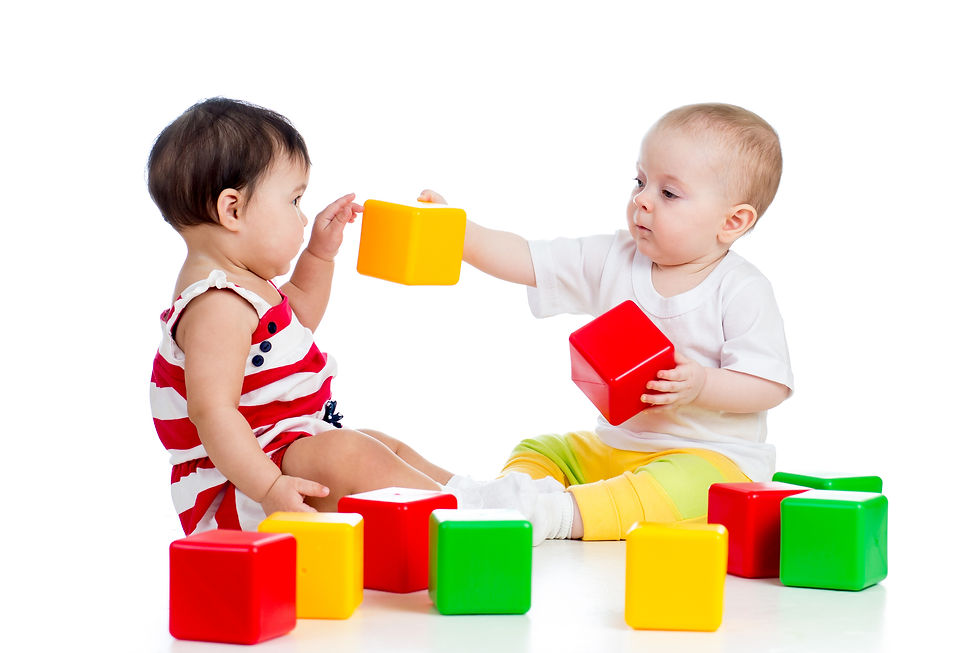The Development of Empathy
- Christina Vlinder
- May 26, 2016
- 2 min read
Updated: Jul 17, 2023

By letting children work out most conflicts on their own (while adults provide narration and keep things safe), we show that we trust that children will develop empathy without being “taught.”
In my RIE® Parent Infant Guidance class for toddlers and their parents, there is a child, Shanice, who has always been driven to interact with her peers. She loves giving the other children hugs, taking their clothes on and off, touching their heads and faces, talking to them, and taking toys from them.
Here are three examples of Shanice interacting with her peers. I wonder if you see the same thing in these play vignettes as I do?
Shanice pulled a toy away from Maria. Maria frowned and picked up another toy. Shanice pulled that toy away too. Maria began to cry, and Shanice grinned widely. Maria went to sit in her mother’s lap.
“Maria sad. Maria crying,” she said to me.
“Yes. Maria is sad. She wants the toy,” I responded.
A few moments later, Maria stopped crying and watched Shanice from the comfort of her mother’s lap with a serious expression on her face.
“Maria sad, Maria crying,” Shanice repeated.
“She stopped crying. Is she sad? I’m not sure.” I moved to get a better look at Maria’s face, and Shanice looked at Maria more closely too.
After a few minutes of further back and forth, Shanice went over to her mother and continued her conversation about whether or not Maria was sad and why.
A little while later, Natsu fell and bumped his head. I was near Shanice at the time, and we had another conversation about emotions.
“Nat sad,” Shanice said, again with a smile.
“Yes, Natsu is sad. He fell. It hurt.”
“Hurt,” Shanice said. “Hug.”
“Natsu is getting a hug from his Auntie. I think he is starting to feel better.” Together, we watched Natsu as he calmed down in the arms of his aunt.
Shanice went behind the curtain to look out the window. Adrian was sitting in his father’s lap nearby. He called out, “Where is she!”
Hearing this cue, Shanice popped out from behind the curtain.
“There she is!” Adrian said triumphantly, and they both laughed.
They repeated this interaction many times, making everyone—both adults and children—laugh.
It’s a lot harder for adults to watch the first play scene than the other two, but I believe they are all part of the same process: developing empathy.
Empathy is a very complicated skill. It requires:
firsthand knowledge of the somatic sensations of emotions, which babies develop starting at birth
the ability to recognize and repeat vocabulary about emotion, which happens in early toddlerhood
theory of mind (knowing that someone else can think or know something different from you), which doesn’t fully develop until the preschool years
the ability to pull together this knowledge to predict an emotional response, or to read an emotional response, and then act in a way we adults can see.
This process doesn’t happen consistently until children are in preschool, although we will see many signs of it before then. As children get more experienced with conflict resolution and empathy, we will see more reciprocal interactions like the peek-a-boo game and fewer games that upset the other child. In the meantime, our job is simply to remain calm, narrate, and keep the children safe.



Comments